May 17, 2025 | 03:58 GMT +7
May 17, 2025 | 03:58 GMT +7
Hotline: 0913.378.918
May 17, 2025 | 03:58 GMT +7
Hotline: 0913.378.918
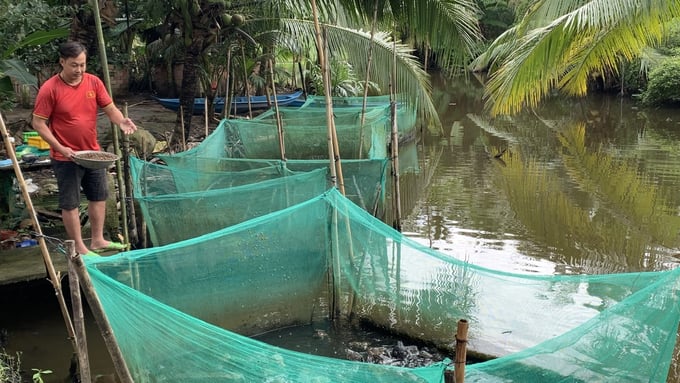
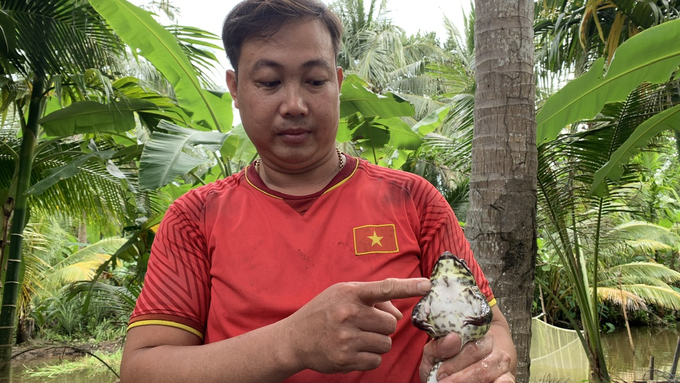
According to Mr. Noi, on average, a frog requires approximately 2 kilograms of feed from the rearing stage to the point of sale. Photo: Ho Thao.
Mr. Noi decided to return to his hometown after graduating from university in 2014, with the dream of achieving success through his family's traditional profession. However, he was unable to select an appropriate animal breed due to a lack of practical experience. In 2019, he encountered information regarding an effective frog farming model and decided to select frogs as his primary livestock venture, which marked the beginning of his entrepreneurial journey.
He initially purchased 5,000 breeding frogs for experimental farming. After observing the frogs' strong development and their adaptation to the local natural conditions, he boldy invested in an additional 50,000 breeding frogs. Due to inadequate understanding of the amphibians' behavior, the frogs suffered from diseases, slow growth, and a considerable number of deaths. Mr. Noi endured unsurmountable stress during his search for a solution, and felt disoriented when his frog farm continually encountered challenges.
However, driven by his passion and enthusiasm, Mr. Noi began learning from experienced individuals and online social platforms to apply their knowledge in practice. As a result, from the ten initial frog pens, he has expanded his farm to cover 100 new pens. Mr. Noi explained that he opted to raise frogs in ponds within pens instead of using tarpaulin-lined ponds on land in order to efficiently utilize the available pond space and avoid the need for daily water replacement.
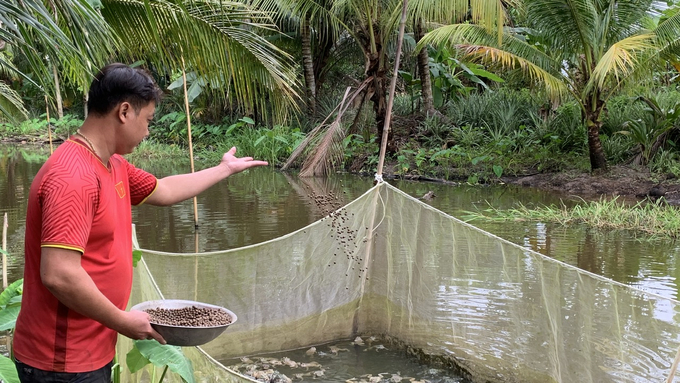
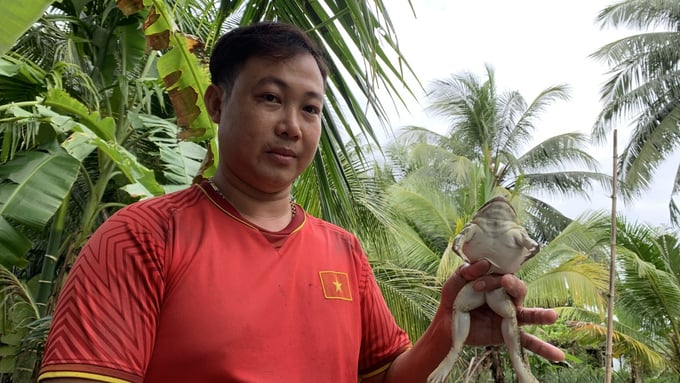
Mr. Noi raises frogs that weigh between 300 to 500 grams at two months old. Photo: Ho Thao.
Mr. Noi emphasizes the importance of not overfeeding frogs, as surplus food can pollute the water source and adversely affect their health. He recommends feeding one-month-old frogs twice a day, reducing the feeding frrequency to once a day when they are nearing two months old, which is close to the selling age. Frogs commonly suffer from various diseases such as bloating, liver and kidney infections, and thigh redness. Consequently, close observation and timely disease detection are crucial for prevention and treatment during the farming process. "It is essential to look out for potential diseases during the initial week of acquiring new frogs and separate any sick individual. As they grow larger and more aggressive near the harvesting phase, they might attack one another if they get hungry. It is necessary to separate them and prevent any impact on other individuals," Mr. Noi disclosed.
Additionally, Mr. Nguyen Van Noi highlights the importance of well-ventilated pen placement and the need to limit the presence of harmful snakes that threaten the frogs. Frogs are also sensitive to human noise, so quiet, less-trafficked locations are preferable. During hot sunny days, he uses shading nets to reduce the temperature of the ponds. However, complete shading is not recommended to ensure that the frogs have access to natural light and a place to escape the heat.
According to Mr. Noi, small-scale frog farmers are typically dependent on intermediaries and prices often fluctuate significantly during peak frog selling months. As a result, Mr. Noi has collaborated with 16 frog-raising households within the province since the beginning of 2022, to export frogs through a partnered company. His collaborative model currently supplies nearly 10 tons of commercial frogs to the market every month. On average, he earns an annual income of at least 300 million Vietnamese dong. This initiative has led many to recognize him as the "Frog Farming Millionaire." "We are preparing to establish a Cooperative to increase the annual production of frog meat to 200 tons. We also commit to minimizing the use of antibiotics to create products that meet international market requirements," Mr. Noi shared.
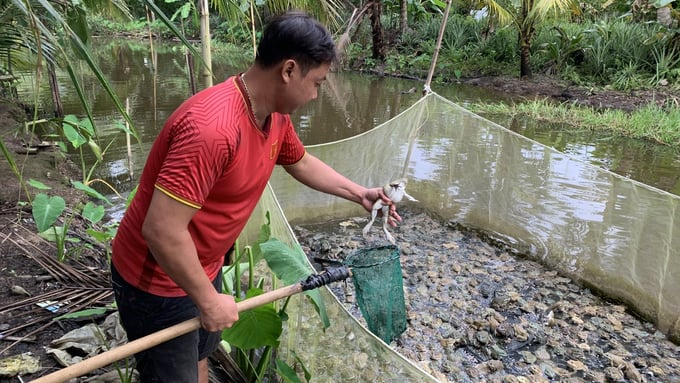
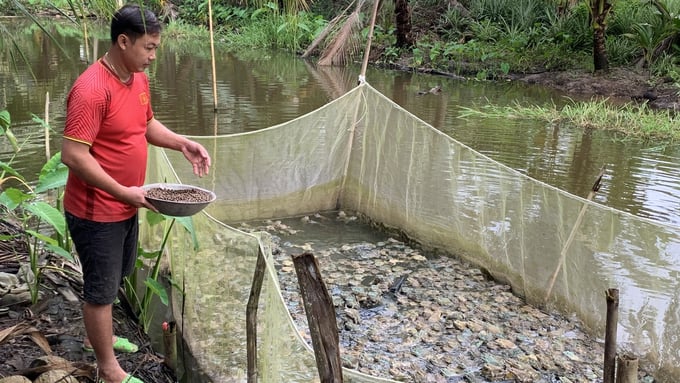
Frogs are voracious eaters; Namely, they might attack one another if they are hungry near the harvesting phase. It is necessary to separate them and prevent any impact on other individuals. Photo: Ho Thao.
Mr. Tran The Khiem, Deputy Director of Mochi Foods Company, shared, "The company is collaborating with Mr. Noi and farmers in the provinces of Can Tho, Tra Vinh, and Dong Thap to raise biologically safe frogs as raw materials on approximately 100 hectares, and supply them to the EU market. The company performs inspections before purchasing and if the frogs are qualified, both parties sign a procurement contract at a stable price for a six-month period." Mr. Khiem affirmed that the Mekong Delta region, with its mild climate and abundant waterways, provides favorable conditions for the development of commercial frog farming. If farmers adhere to standardized techniques and produce biologically safe products, Vietnamese frogs will have a competitive advantage in the international market.
According to Mr. Le Van Dong, Deputy Director of Tra Vinh province's Department of Agriculture and Rural Development, frog farming is considered a new direction for modern farmers due to the fluctuating prices of other aquatic products such as shrimp. The novelty in Mr. Nguyen Van Noi's model lies in new production mindset, whereby he transitioned from individual farming to connecting farmers and signing contracts with companies to create stable outlets for local residents.
Furthermore, Mr. Le Van Dong advised that farmers must adhere to farming procedures and techniques in addition to refraining from using prohibited substances in livestock farming to establish credibility and ensure long-term development for the collaborative model. Notably, Tra Vinh province has organized various training sessions for local residents on effective farming models, including commercial frog farming, with the aim of expanding these models in the near future.
Translated by Nguyen Hai Long
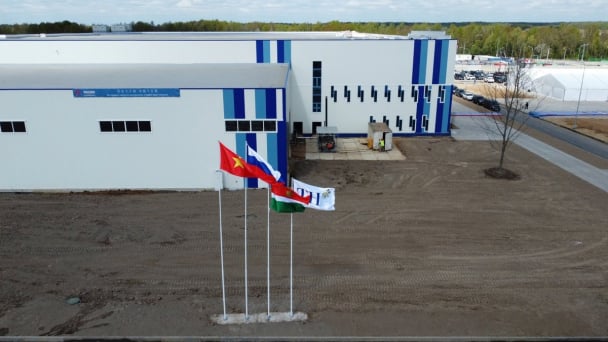
(VAN) Vietnam’s TH Group officially put its high-tech fresh milk processing plant into operation in the Russian Federation, marking a historic moment as the first TH true MILK cartons were produced in Russia.
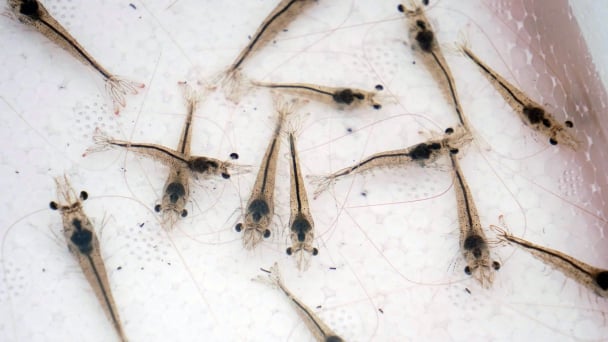
(VAN) Use of high-quality broodstock and biotechnology is regarded as the most effective approach to ensuring sustainable and economically viable shrimp aquaculture ahead of climate change and the emergence of increasingly intricate disease patterns.

(VAN) Carbon farming is a form of agricultural practices that helps absorb more greenhouse gases than it emits, through smart management of soil, crops, and livestock.
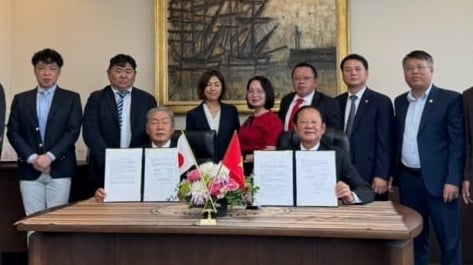
(VAN) This is a key content of the Memorandum of Understanding recently signed between the Vietnam Fisheries Society and Kunihiro Inc of Japan.
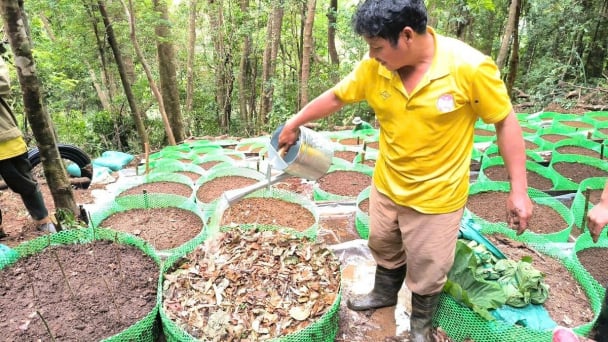
(VAN) To achieve the goal, local authorities and businesses in Kon Tum province have fully prepared the necessary conditions for the new Ngoc Linh ginseng planting season.

(VAN) Jiangsu province is gearing up to host training programs in Phnom Penh, the capital of Cambodia, this year to establish the Fish and Rice Corridor.

(VAN) Le Hoang Minh, representing Vinamilk, shared the company's experience in energy saving and green energy transition for production at a workshop held during the P4G Summit.